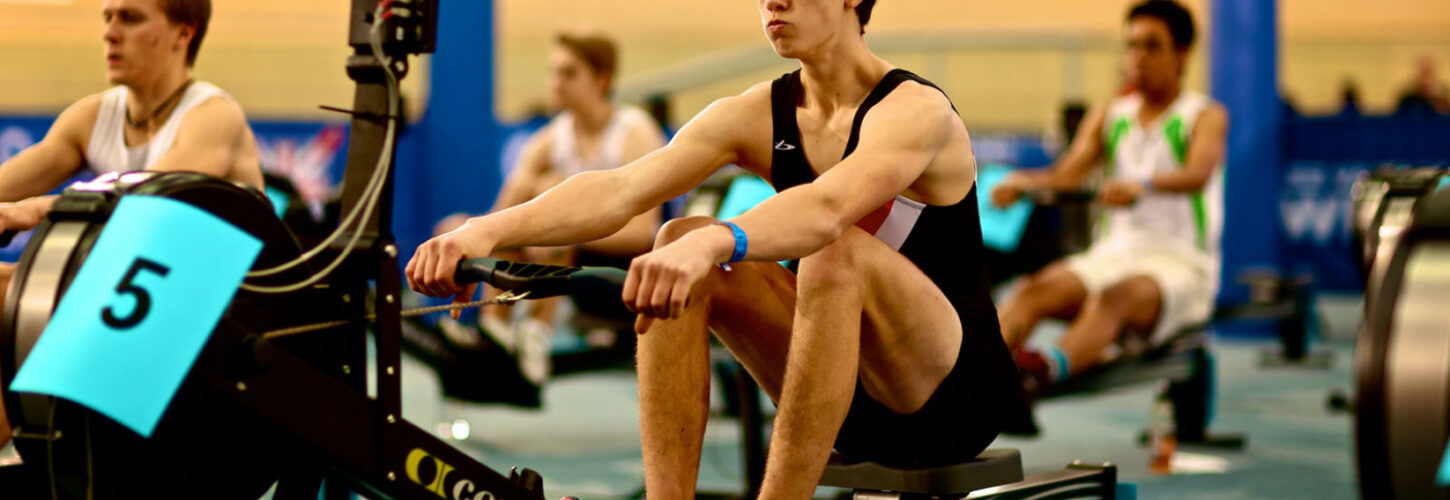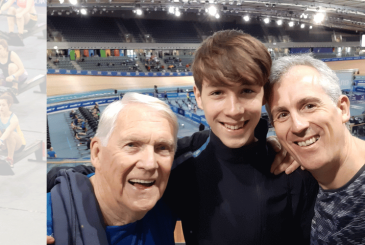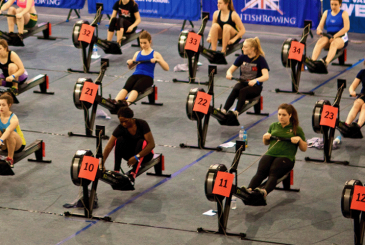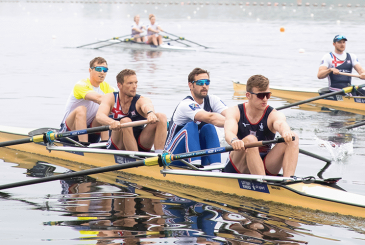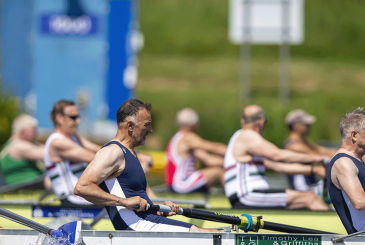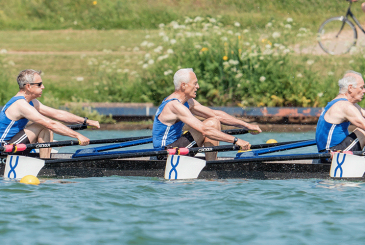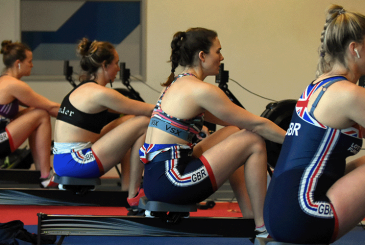Ahead of the British Rowing Virtual Championships taking place this weekend, Jack Brown takes us through the ideal race day warm up
It is widely accepted that warming up before exercise reduces the risk of injury and improves performance. Whilst you may already have a warm up routine for day-to-day training, looking ahead to the British Rowing Virtual Championships in September, it is worth considering how to warm up specifically before an indoor rowing race. Doing so will put you in a strong position to deliver your best performance.
T-minus 45 minutes
An effective race day warm up can be broken down into several elements. Approximately 45 minutes before the start of your race, perform five or so minutes of light exercise (e.g. rowing, cycling, jogging, or skipping) to enhance blood flow and lubricate your joints. Completing some mobility exercises and dynamic stretching will then activate key muscle groups and encourage full range of movement. Your exercise selection here will likely come down to personal preference. Nevertheless, you should consider the movement patterns involved in ergometer rowing and work up through your whole body systematically (i.e. ankles, knees, hamstrings, quadriceps, hips, glutes, core, back, chest, shoulders, and arms), spending approximately 30 seconds per exercise. Mentally, this period provides an opportunity to get focused on the task ahead.
Short, intense efforts such as…[the first five strokes of your race]…will help optimise muscle recruitment and rate of force development, both of which are important for delivering horsepower during your race
T-minus 30 minutes
Aerobic exercise is required to prepare your cardiovascular system. One of the main physiological outcomes associated with this element of the warm-up is, as the name implies, an increase in muscle temperature. Importantly, this augments energy metabolism and muscle contraction – simply put, warm muscles are more powerful and efficient. To generate heat in your muscles, it is recommended that you perform approximately 25 minutes of ergometer rowing in total. This can include technical drills, but ensure you work hard enough to elevate your heart rate and get a good sweat on.
After five minutes of rowing at a two to three rating of perceived exertion (RPE) level, you can build from stroke rate 22 to 28, increasing by two strokes per minute every 30 seconds. This ramp up in intensity will not only help you get a feel of what each rate feels like, but it will engage the energy systems responsible for delivering oomph throughout your race. After completing this and recovering for a few minutes, you can then complete an effort at race pace to elevate your oxygen uptake in time for the start of your race.
This may seem like a big exertion during a warm up, but research indicates that, via various physiological mechanisms, performing such a bout of heavy-intensity ‘priming’ exercise can increase your average power output and preserve limited anaerobic energy stores, the latter of which can be utilised during a sprint finish. Striking the right balance is key here – your race pace effort should last one minute and it should be completed approximately 20 minutes before starting your race – this will ensure you preserve the beneficial effects of the priming bout on elevating oxygen uptake, whilst providing sufficient time for fatigue to be dissipated before beginning your race.
(N.B. If you are racing in hot conditions, you should exercise caution with an overly prolonged and/or intense warm up)
T-minus 20 minutes
After your priming effort, conclude your 25 minute block of rowing, employing an RPE level of two to three. This can be interspersed with two 15 stroke bursts above race pace. You should also practise the first five or so strokes of your race. Short, intense efforts such as these will help optimise muscle-recruitment and rate of force development, both of which are important for delivering horsepower during your race.
T-minus 5 minutes
Once you have completed all of the above steps, rest for five minutes to clear any fatigue that could compromise performance. It is likely that muscle temperature will drop during this rest period; however, by wearing an additional layer of clothing, such as leggings, and removing them just before you start your race, you can attenuate the cooling down of key muscle groups (e.g. the quadriceps). Such a strategy may be particularly relevant if you are planning on doing your race in a cold garage.
Dedicating time to the aerobic element of your warm-up is key
Putting it all together
Use the above elements as a guide to plan your own race day warm up and make adjustments based on individual requirements. Practising your warm up is vital, so look for opportunities to do this before high-intensity training sessions and/or race preparation pieces. You may find that you initially strike the wrong balance, maybe being undercooked before your race, or on the flipside short of breath and excessively fatigued. You may also want to tweak the stroke rates that you warm up at, so test and refine until you have an effective routine that gets you ready to go!
Considerations
In total, your race day warm up should last around 45 minutes. For a race lasting less than 10 minutes, this may sound like a long time to spend simply warming up, but do not underestimate the importance of getting heat into your muscles and preparing your cardiovascular system. In selecting your warm up duration, it’s also worth considering when you will be completing your race. For instance, if you are racing shortly after getting out of bed, you will probably need to spend a bit longer getting loose. Likewise, if you’ve been at work all day, perhaps sitting in an uncomfortable position, you will again need to take that account when designing your warm up routine.
The above warm up elements have been discussed with a 2000m indoor race in mind. If you are competing in a shorter event, such as a 500m race, you will need to tweak your warm up accordingly. For example, to ensure optimal power production at the start of your race, you can shift the focus towards readying your neuromuscular system with very short, explosive efforts at maximal intensity.
Before making big cuts to your total warm up duration, it is important to note that dedicating time to the aerobic element of your warm up is still key. This is because a 500m race, although relatively short in duration, will still require a significant proportion of energy to be delivered using oxygen. So sufficiently preparing your cardiovascular system remains fundamental. Furthermore, investing time generating heat in your muscles is especially important for shorter races, which are heavily reliant on explosive power production.


